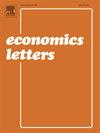公共数据的力量:公共数据如何塑造中国人工智能企业的空间分布?
IF 1.8
4区 经济学
Q2 ECONOMICS
引用次数: 0
摘要
我们以“建立公共数据开放平台”为准实验,采用交错DID方法考察公共数据开放对人工智能企业空间分布的影响。我们发现,公共数据开放显著促进了人工智能企业集聚,尤其是在内陆、北方和资源型城市。这种积极效应是通过改善资本配置和提高人才集中度来实现的。我们的研究结果强调了数据治理改革在塑造数字产业地理学中的关键作用,并为公共数据开放对促进包容性和创新性空间发展的益处提供了经验证据。本文章由计算机程序翻译,如有差异,请以英文原文为准。
The power of public data: How does public data shape the spatial distribution of China's AI Firms?
We consider the "establishment of public data open platforms" as a quasi-experiment and adopt the staggered DID method to examine the effect of public data openness on spatial distribution of AI firms. We find that public data openness significantly increases AI firm agglomeration, especially in inland, northern, and resource-based cities. This positive effect acts through improving capital allocation and increasing talent concentration. Our findings highlight the critical role of data governance reforms in shaping digital industrial geography and provide empirical evidence on the benefits of public data openness for fostering inclusive and innovative spatial development.
求助全文
通过发布文献求助,成功后即可免费获取论文全文。
去求助
来源期刊

Economics Letters
ECONOMICS-
CiteScore
3.20
自引率
5.00%
发文量
348
审稿时长
30 days
期刊介绍:
Many economists today are concerned by the proliferation of journals and the concomitant labyrinth of research to be conquered in order to reach the specific information they require. To combat this tendency, Economics Letters has been conceived and designed outside the realm of the traditional economics journal. As a Letters Journal, it consists of concise communications (letters) that provide a means of rapid and efficient dissemination of new results, models and methods in all fields of economic research.
 求助内容:
求助内容: 应助结果提醒方式:
应助结果提醒方式:


